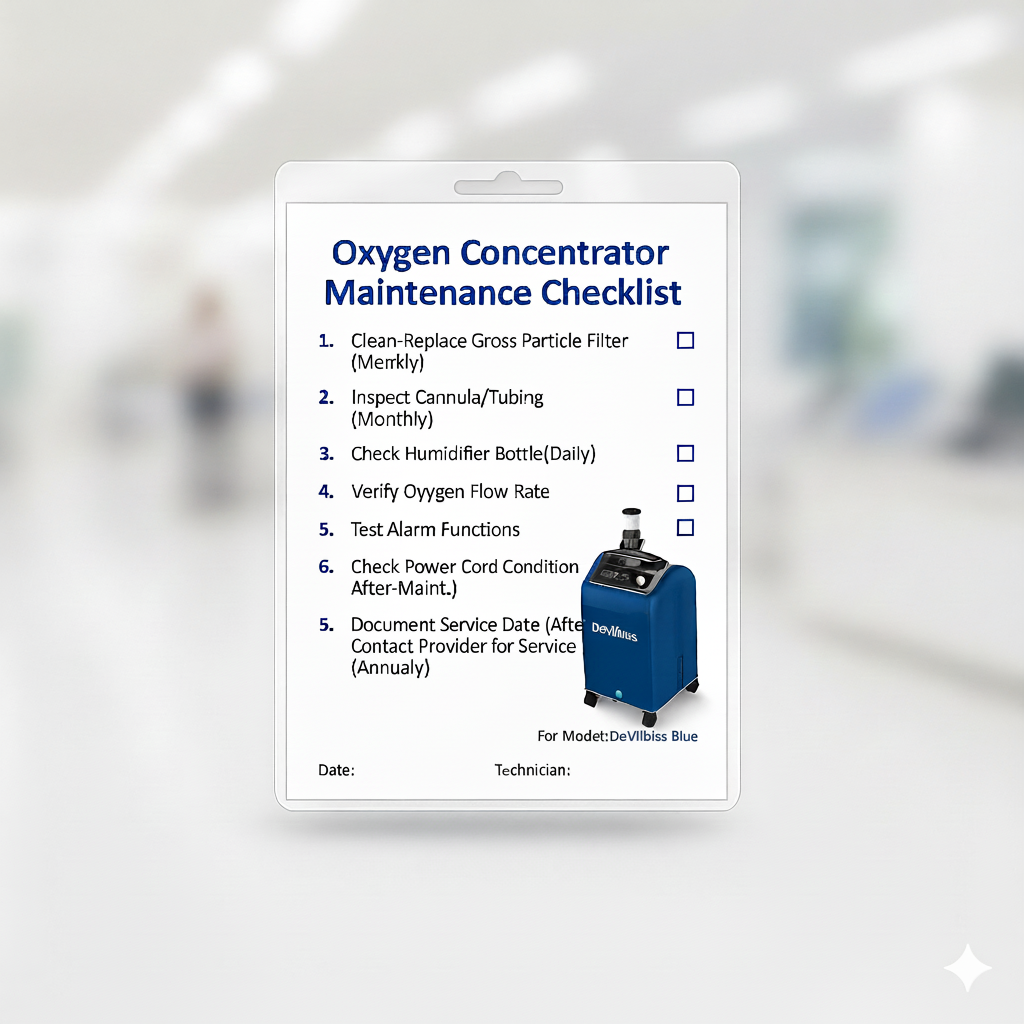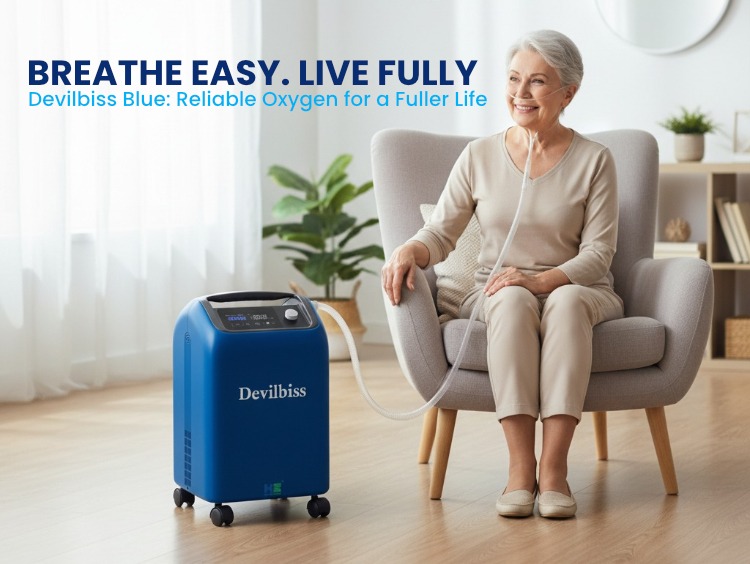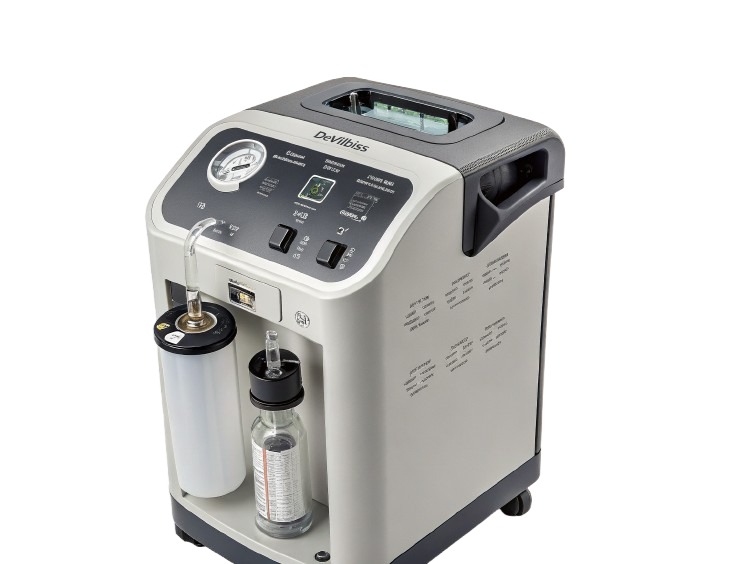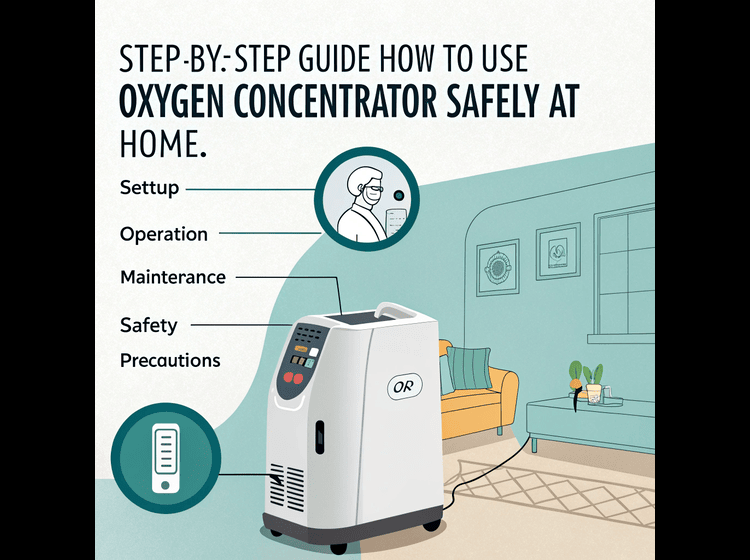Oxygen Concentrator Maintenance Checklist
Why Maintenance Matters
An oxygen concentrator works by taking in air, filtering out nitrogen, and delivering concentrated oxygen to the user. Over time, dust, moisture, and wear can affect its internal filters and compressor efficiency. Without proper cleaning and inspection, the machine may deliver less oxygen or even stop working when you need it most.
Regular maintenance helps to:
- Maintain oxygen purity and flow rate
- Prevent breakdowns and costly repairs
- Improve energy efficiency
- Extend the overall lifespan of the machine
- Ensure user safety and reliability
Daily Oxygen Concentrator Maintenance Tasks
Your oxygen concentrator runs for hours every day, so it’s important to perform a few simple daily checks.1. Check the Power Source
Ensure the concentrator is plugged directly into a stable power outlet — avoid using extension cords or adapters. Confirm that the power light is on and the machine starts normally.2. Inspect the Cannula and Tubing
Examine the nasal cannula and oxygen tubing for cracks, bends, or blockages. Replace them if they look worn out or discolored. Clean or change tubing regularly, as recommended by the manufacturer.3. Verify Oxygen Flow
Turn on the device and check if oxygen is flowing smoothly. You can test this by placing the nasal prongs in a glass of water — you should see bubbles if oxygen is flowing.4. Listen for Unusual Sounds
A quiet humming noise is normal, but any loud rattling, clicking, or whirring could indicate a mechanical issue that needs attention.Weekly Maintenance Checklist
A few minutes of care each week can prevent major problems down the line.1. Clean the Exterior
Use a soft, damp cloth to wipe the concentrator’s surface. Avoid harsh chemicals or sprays, as they can damage electrical parts. Keeping the exterior dust-free also improves air intake efficiency.2. Wash the Humidifier Bottle (If Applicable)
If your concentrator includes a humidifier bottle, empty and clean it daily or at least weekly using mild soap and warm water. Rinse thoroughly and let it air dry before refilling with distilled water. Never use tap water, as minerals can build up and clog the system.3. Check Air Intake Vents
Inspect the air intake and exhaust vents for dust buildup. A blocked vent can cause the concentrator to overheat. Use a small brush or vacuum to remove debris carefully.4. Verify Oxygen Output
Use an oxygen analyzer (if available) to check purity levels. A reading below 90% may indicate the need for professional servicing.
Monthly Oxygen Concentrator Maintenance
Monthly maintenance ensures long-term reliability and optimal performance.1. Clean or Replace Filters
Most concentrators have two types of filters — a reusable external filter and an internal bacterial filter.The external filter can be removed, washed with mild detergent, rinsed, and air-dried completely before reinstallation.
The internal filter is usually replaced by a technician every 6–12 months, depending on usage.
2. Inspect for Air Leaks
Listen carefully around connection points, tubing, and fittings for hissing sounds that might indicate an air leak. Replace any damaged parts immediately.3. Check Alarm System
Many modern concentrators come with audio or visual alarms for low oxygen purity, power failure, or system error. Test these alarms monthly to ensure they’re working properly.4. Ensure Proper Placement
Position the concentrator in a well-ventilated area, away from walls or curtains. Maintain at least 1–2 feet of clearance around it to allow proper airflow and cooling.Conclusion
A well-maintained oxygen concentrator is the difference between uninterrupted therapy and unexpected downtime. By following this oxygen concentrator maintenance checklist, you can ensure your device delivers pure, reliable oxygen every day. Regular cleaning, inspection, and professional servicing not only protect your investment but also provide peace of mind knowing your oxygen supply is always dependable.Oxygen Concentrator Sale DeVilbiss brand is well-known for its durable, high-quality oxygen concentrators.These machines with features like quiet performance, steady oxygen flow, and easy maintenance, they’re an excellent choice for
Step-by-step guide - How to use an oxygen concentrator safely at home” oxygen concentrator have become essential medical devices for people with respiratory conditions such as COPD, asthma, pneumonia, and
Oxygen Concentrator vs Cylinder – Which Is Better for Home Use? When it comes to home oxygen therapy, choosing the right device is crucial for your health, comfort, and safety.
How Much Does Oxygen Concentrator Rental Cost in Chennai? When someone is advised to use an oxygen concentrator at home—whether due to chronic respiratory conditions, post-COVID recovery, or other medical
Oxygen Concentrator vs Cylinder — Which Is Safer? When it comes to oxygen therapy, one of the most common questions patients and caregivers ask is: “Which is safer — an
Oxygen Concentrator Maintenance Checklist A oxygen concentrator If you or a loved one relies on an , you know how vital it is to ensure it functions properly every day.
Reliable Oxygen Concentrator for Clinic In modern medical care, a reliable oxygen concentrator is one of the most essential pieces of equipment for any clinic or healthcare facility. Whether it’s
DeVilbiss Oxygen Concentrator Dealer When it comes to oxygen therapy and respiratory care, choosing the right equipment and dealer makes all the difference. Among the leading names in the global
High Flow Oxygen Concentrator for Cardiac Patients For individuals with heart conditions, maintaining proper oxygen levels is crucial. A high flow oxygen concentrator provides a steady and controlled supply of
Oxygen Concentrator for Post Cardiac Intervention Recovering from a cardiac intervention—such as angioplasty, bypass surgery, or stent placement—requires special care and monitoring. One key factor that supports faster and safer



